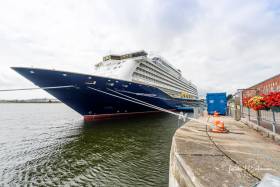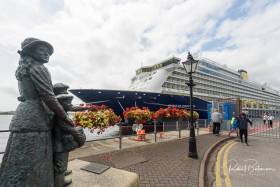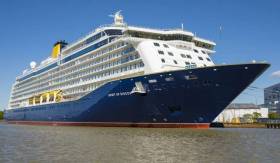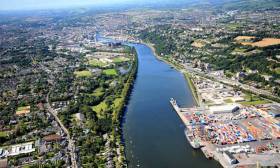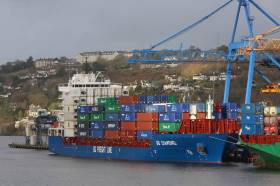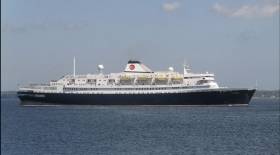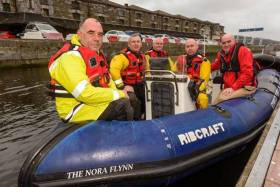Displaying items by tag: port of Cork
The Port of Cork Company turnover in 2018 amounted to €35.4 million, an increase of €3.9 million from €31.5 million in 2017. The combined traffic of both the Ports of Cork and Bantry increased to 10.66 million tonnes in 2018 up from 10.3 million tonnes in 2017, an increase of 0.3 million tonnes or 3% due to increased bulk cargo activity as result of the 2018 fodder crisis and increased container traffic at Tivoli.
The profit on ordinary activities before taxation amounted to €5.1 million and the profit after taxation for the financial year amounted to €4.4 million.
In May 2018, the Port of Cork Company commenced the Ringaskiddy Port Redevelopment project in the lower harbour which will future-proof the Port of Cork Company as an international gateway for trade. The full development involves the construction of new container handling facilities in Ringaskiddy, followed by an extension to the existing deep-water berth in due course. This key strategic project will cost circa €86 million in the period 2017 – 2020 with funding secured from EIB, AIB and ISIF, (the Ireland Strategic Investment Fund) along with (CEF) Continuing Europe Facility grant aid and Company resources.
John Mullins Chairman of the Port of Cork said: ‘Overall we are very pleased with the 2018 annual results as we move forward with the Ringaskiddy Port Redevelopment. The stated policy of the Board of the Port of Cork Company is to support the Shareholder and following approval from the Board in April 2019; the Directors agreed a dividend payment of €250,000 in 2019 in respect of the 2018 financial year.’
The Irish Economy is dependent on the ability of its Ports to trade successfully and the Port of Cork Company is a critical component of the national transport infrastructure network and therefore must continue to invest in modern, sustainable and well-connected infrastructure and superstructure. In 2018 Port of Cork Company signed a contract with Liebherr Container Cranes to supply two post panamax size ship to shore (STS) container gantry cranes to the Port of Cork for the new Cork Container Terminal in Ringaskiddy.
The Port of Cork Company is constantly monitoring the potential impact of Brexit on port activities from both a national and EU trade perspective and according to the Chief Executive, Brendan Keating: ‘Discussions with Government Departments, Customs and the Gardai in relation to potential impacts of Brexit are ongoing. The commencement by Brittany Ferries of the new shipping RoRo service direct from Ringaskiddy, Cork to Santander and Roscoff in May 2018, was a welcome and successful route and we will continue to monitor the potential impacts Brexit may have on our business and that of our customers.’
In 2018, the Port hosted 93 cruise ships, carrying in excess of 200,000 passengers and crew. The Port of Cork Company’s continued commitment to the cruise business is reinforced by its work with Cork County Council in planning for the provision of a second dedicated cruise berth in Cobh at Lynch’s Quay. To this end “Expression of Interests” was invited and a number of submissions are currently under consideration.
The latest cruise ship from Saga Cruises, the highly anticipated 'Spirit of Discovery' has docked in Cobh on her make her maiden call to a wet Cork Harbour today.
As Afloat's Jehan Ashmore wrote yesterday, this brand new, luxury boutique British liner carries 999 passengers on board and was recently named by the Duchess of Cornwall, at an official naming ceremony in Dover.
Also as Afloat reported earlier, the Cork Harbour destination for the Spirit of Discovery was this week voted one of the world's top stopovers.
Saga Cruises have a rich history calling to the Port of Cork and have included Cobh on their British Isles cruise itinerary for many years now, as well as Belfast and Dublin. To mark the maiden calls to Dublin, Belfast and Cork, the ports and Excursions Ireland jointly commissioned a special shamrock magnet for every passenger on the inaugural cruise.
See photo gallery below
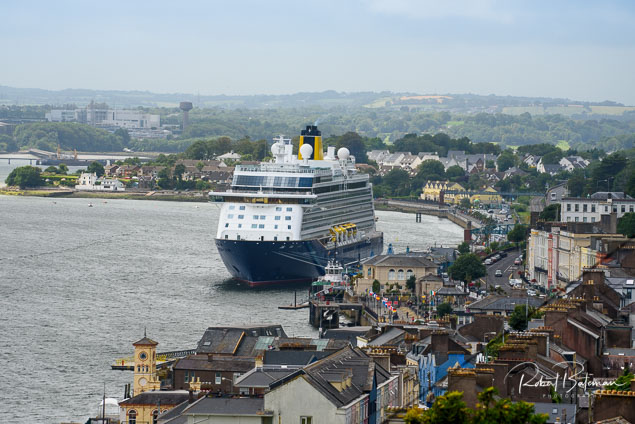
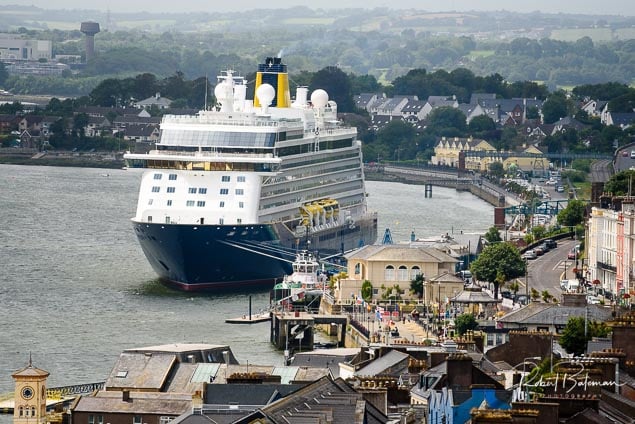
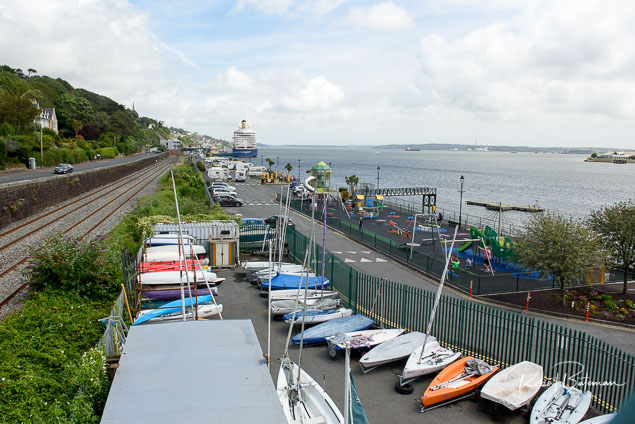
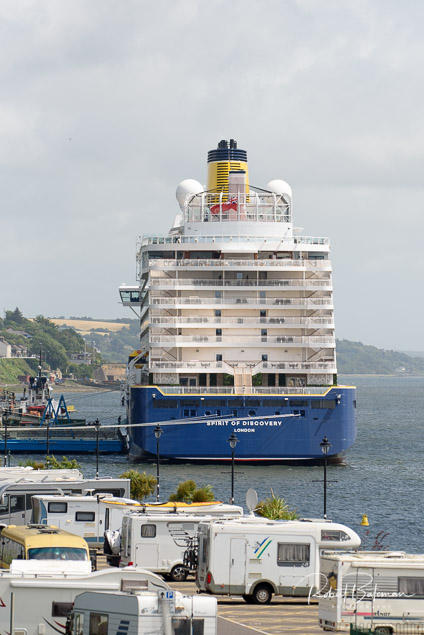
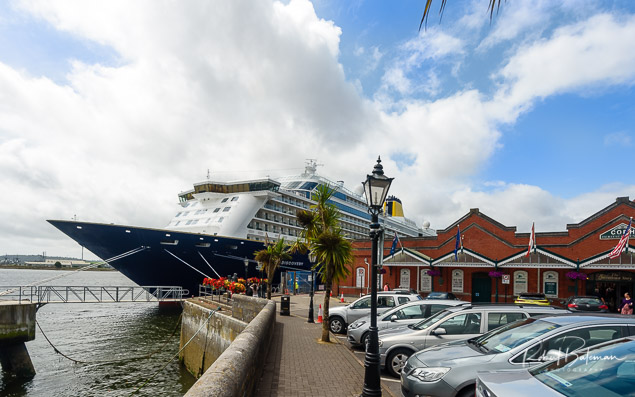
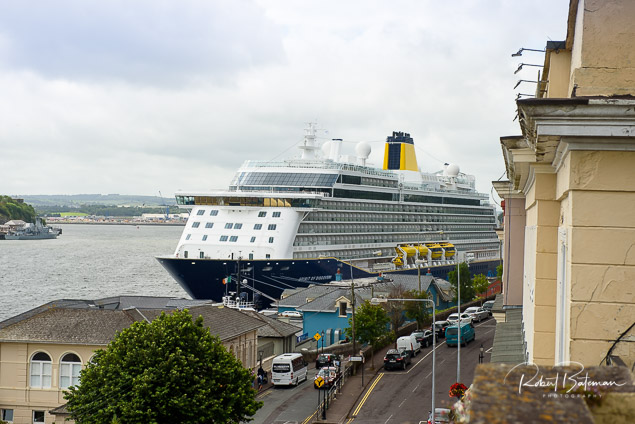
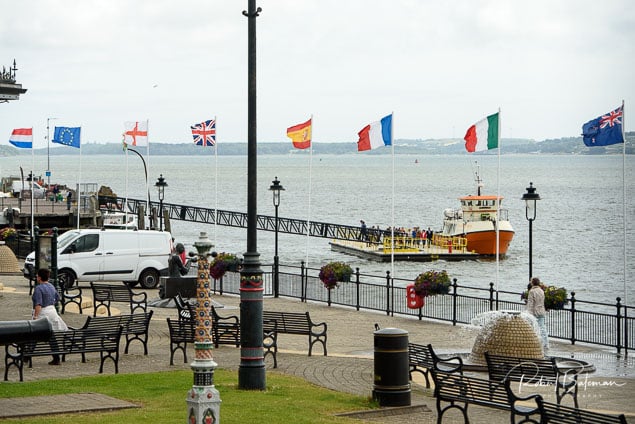
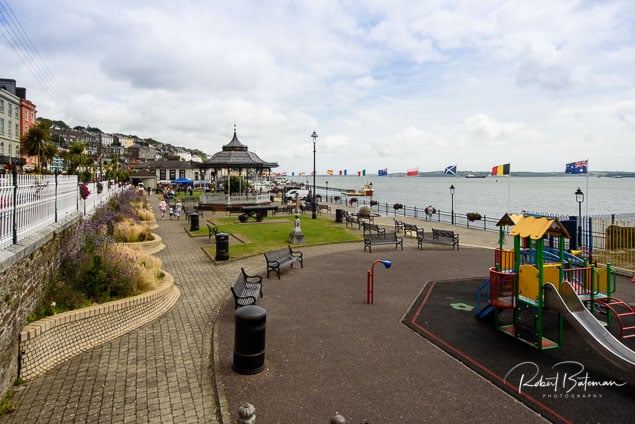
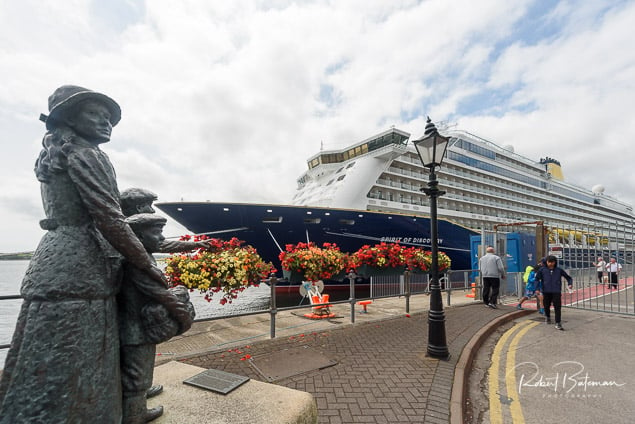
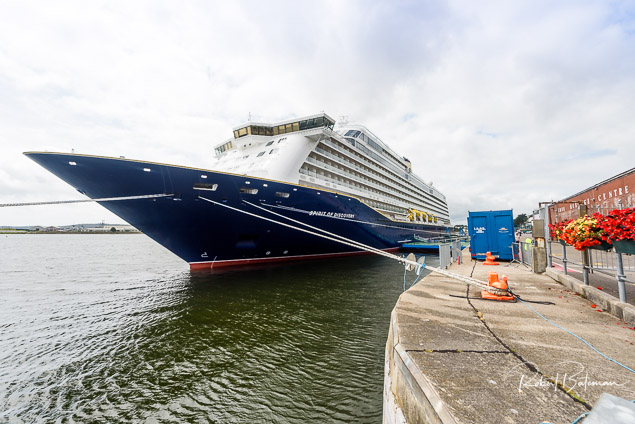
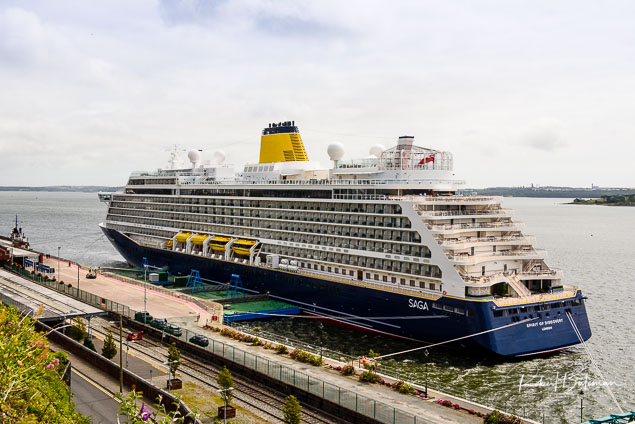
Spirit of Discovery Cruise Liner Makes Maiden Call to Cobh
The latest cruise ship from Saga Cruises, the highly anticipated Spirit of Discovery will make her maiden call to Cobh on Friday 19th July.
As Afloat's Jehan Ashmore wrote yesterday, this brand new, luxury boutique British liner carries 999 passengers on board and was recently named by the Duchess of Cornwall, at an official naming ceremony in Dover.
Also as Afloat reported earlier, the Cork Harbour destination for the Spirit of Discovery was this week voted one of the world's top stopovers.
Saga Cruises have a rich history calling to the Port of Cork and have included Cobh on their British Isles cruise itinerary for many years now, as well as Belfast and Dublin. To mark the maiden calls to Dublin, Belfast and Cork, the ports and Excursions Ireland jointly commissioned a special shamrock magnet for every passenger on the inaugural cruise.
Brendan Keating, Chief Executive of the Port of Cork said: ‘It’s an honour to welcome Saga Cruises latest cruise ship, Spirit of Discovery to Cobh. This new luxury liner, is great example of high end boutique cruising and we very much look forward to working with Saga to ensure Spirit of Discovery becomes a regular caller to Cobh.’
Spirit of Discovery is the 60th of 102 calls this cruise season, a record year for the Port of Cork with over 200,000 passengers’ anticipated.
On average, cruise ship passengers spend €81 during their time in Cork; with 42% of this money being spent on shopping, 32% on excursion travel and 17% on food and drink. Typically crew spend approximately €29, with most of the money being spent on food and drink and/or shopping.
The increased cruise calls to Cork are indicative of the wider global cruise business which has seen huge growth. In 2018 an estimated 27.2 million people took a cruise on over 450 cruise ships worldwide. With the global cruise ship order book for new build contracts reaching 113 ships between now and 2027, Cork cruise business is set to grow further in the coming years and the Port of Cork is eager to attract these new ships.
Plans for Ireland's Tallest Building at Port of Cork Site... Twice the Height of Elysian Tower
Developers of the historic Custom House Quay site in Cork are promising a project that will be a ‘symbol not only for the city but an icon for Ireland as a prominent modern European destination’.
As EchoLive reports, details of the 34-storey hotel tower, twice the size of the Elysian, at the Port of Cork's Custom House site were revealed today by the developers, Tower Holdings Group.
The skyscraper will also include retail units, cultural spaces, food and beverage businesses, office space, recreational areas and a micro-distillery.
A planning application for the development is not expected to be lodged until later this month.
The Port of Cork & Port of Amsterdam to Collaborate
Today, Port of Cork and Port of Amsterdam International, in the presence of His Majesty Willem-Alexander and Her Majesty Máxima, as well as Minister Sigrid Kaag, signed a collaboration agreement in Cork. Both ports will research in what areas they can strengthen and support each other.
Ireland is an important trading partner for the Netherlands. In 2017, the country exported over 5.5 billion euros of goods to the Netherlands. This makes the Netherlands the sixth biggest export destination for Irish goods. In the same year, Ireland imported over 3.5 billion euros worth of goods from the Netherlands. This chiefly consisted of pharmaceuticals, machines, and transport equipment.
The Port of Cork, as well as the Port of Amsterdam, wish to share their expertise and experience in a number of areas in order to promote trade between their ports. Themes under consideration are port development, stakeholder management, cruise development, ports logistics and mitigation of the impact of Brexit, which is expected to have a significant impact on Ireland. The definitive themes are to be determined in the upcoming months. The agreement is part of the ambition of Port of Amsterdam to strengthen its position in the short sea segment.
Even though it is as of yet not clear which Brexit scenario will come to fruition, the expectation is that the logistics of trade through the United Kingdom will be more expensive and complex. This makes direct (shipping) connections to the European mainland more viable. The expectation is therefore that this will be accompanied by a shift from use of the land bridge to use of direct shipping connections with the Netherlands.
Gert-Jan Nieuwenhuizen, Managing Director of Port of Amsterdam International, ‘We see many opportunities to work together with Port of Cork, the second largest port of Ireland. With an eye on developing partnerships, we look for ports that wish to exchange knowledge and that we can support in successful port development. We research scenarios, look at opportunities and seek to jointly capitalise on these opportunities.’
Chairman of the Port of Cork John Mullins said, ‘Our historical bond with the Netherlands makes that we know each other well, and our joint goals ensure smooth collaboration. Port of Cork is making significant investments to keep developing the port and we have grand ambitions for our commercial position. We look forward to what this collaboration will bring to both ports.’
The collaboration agreement was signed as part of the trade mission port development/maritime infrastructure, headed by the Minister of Foreign Trade and Development Cooperation, Sigrid Kaag. The royal couple were in Ireland for a parallel state visit.
St Columbas Girls National School Win ‘Best Overall Project’ in the Port of Cork Schools Initiative 2019
Port of Cork Chairman, Mr. John Mullins congratulated St Columbas Girls National School for being awarded ‘Best Overall Project’ in the Port of Cork Schools Initiative 2019. Scoil Barra Naofa, Monkstown were given special recognition for their outstanding level of research and content used in their project.
The Port of Cork have been running their primary schools initiative for 13 years now and 2019 was the first year that Port of Cork teamed up with MaREI, the UCC research Centre for marine and renewable energy based in Ringaskiddy, to deliver this educational initiative around marine litter.
Themed ‘Maintaining a Healthy Harbour’ the initiative educated school children on marine litter and the detrimental effects it can have on our oceans, harbour and shorelines. Over twenty schools took part and with the help of MaREI, classes were encouraged to collect and use marine litter and recycled items to create a 3D art project that makes people stop and think.
John Mullins said: ‘All the schools that participated in this year’s initiative can feel proud of their efforts as the projects submitted were incredibly visual and would certainly make people stop and think about the effects of marine litter.’
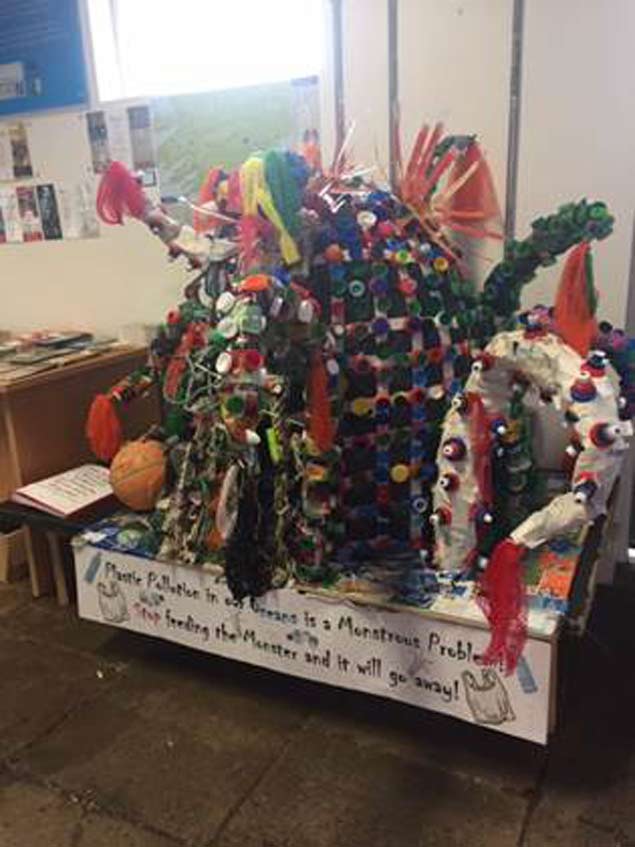 St Columbas Girls National School’s ‘Plastic Monster’
St Columbas Girls National School’s ‘Plastic Monster’
He told the children they are our future and said: ‘It is the younger generation, like yourselves that will make the difference and you are an inspiration for us all.’
The Port of Cork were joined by Aoife Deane from MaREI and Susan Vickers from Clean Coasts who both judged the projects.
Researchers estimate that over 10 million tonnes of litter ends up in the world’s oceans each year and 1 million seabirds and 100,000 marine mammals (seals, whales, dolphins) die every year because of marine litter through entanglement or ingestion. There is a growing public awareness of the issue, and with almost half of all marine litter being made up of just 10 types of single-use plastic items, we can take steps to tackle the problem.
Port of Cork Chairman John Mullins reminded all participating classes that as well as receiving a certificate of participation, every class will be treated to a high speed, fun filled boat trip around Cork Harbour, compliments of the Port of Cork. As an extra special prize, best overall winners St Columbas Girls National School will go on board a cruise liner in May for a tour of the ship.
All school projects are currently on display at the Cobh Maritime Building, located on the platform at Cobh Railway Station until the end of May.
As part of Cork Harbour Festival and Seafest the projects will be on display to the public in Custom House, Cork City from 1st – 9th June 2019.
The Port of Cork and its partners were ‘highly commended’ at last night’s Seatrade Awards in the ‘Deal of the Year’ category in recognition of its work in securing significant funding for the development of the new Cork Container Terminal (CCT) in Ringaskiddy, which will open in 2020.
The funding for the €80m project was secured from a combination of sources including the Allied Irish Banks p.l.c (AIB), the European Investment Bank (EIB), and the Ireland Strategic Investment Fund (ISIF), as well as EU Connecting Europe Facility funds, and self-finance. €1m of the total capital secured is allocated to a community gain fund for the Ringaskiddy area.
The deal represents a major commitment and pan-European belief in the future of the Irish maritime sector and took two years to complete. It puts in place an innovative transaction structure involving senior debt from AIB and EIB and junior debt from ISIF. As a key infrastructure deal, the project will increase future capacity at the port and bring major strategic value to the city of Cork and the wider Munster region, as well as the overall Irish economy.
Established in 1989, the Seatrade Awards recognise shipping's most impressive innovations and achievements. Throughout its 30-year history, the Awards have provided a reliable benchmark for success, the trends affecting the maritime world, and celebrating those who are driving the industry forward.
The Port of Cork was recognised by the EU as a ‘core’ port on the North Sea Mediterranean Corridor, and identification by the Irish Government as a Tier 1 Port. Secured through an innovative financing structure, the funding arrangement represents the most significant single investment in marine infrastructure and superstructure in the 200-year history of the Port of Cork.
Donal Crowley, Chief Financial Officer & Deputy CEO of the Port of Cork commented: “The Port of Cork's natural deepsea harbour and geography makes it ideally placed to enhance trade between Ireland and the rest of the world. But no matter how necessary the move to expand the port was from a strategic perspective, securing funding for the project was a huge challenge, and we must credit our finance team at the Port, and all our finance partners for arranging this innovative deal.
“The deal not only secures the Port’s legacy and delivers a 21st century terminal but cements a bright future in terms of the Port’s growth to benefit the local Cork area and the wider Munster region economically.”
The CCT redevelopment is a Strategic Trans – European Transport Network (TEN-T) project, recognising the Port of Cork’s significant growth potential. The first phase of this development provides critical replacement facilities for the Tivoli Container Terminal and will initially span a 360-metre quay with 13 metre depth alongside; initially enabling vessels of up to 4,000 TEUs berth.
The development includes the construction of a 13.5 hectare ‘greenfield’ terminal, serviced by modern and efficient cargo handling equipment, with innovative terminal operating and vehicle booking systems.
Cork's Tivoli Redevelopment Updated Designs Are Considered
#waterfrontproperty - EchoLive reports of updated design plans in Cork for the redevelopment of the Tivoli docklands that were discussed at a recent meeting in City Hall.
At the Planning Strategic Policy Committee (SPC), officials outlined the proposed development that would see more than 10,000 people living and working in Tivoli.
The Port of Cork is set to vacate the site in the next two years, and plans to create an urban area the size of Blackrock are being prepared.
According to City Hall, Government funding under the Local Infrastructure Housing Activation Fund (LIHAF) to develop the area has been secured.
While Cork City Council does not own the land itself, it is supportive of projects to enhance the city.
More on this story can be read from this link.
2019 Will Be a Record Year for Port of Cork Cruise Calls
The first of 102 cruise liners MV Astoria will arrive into Cobh on Monday 1st April and officially commence the Port of Cork’s 2019 cruise season. Without doubt, 2019 will be a record year for the Port of Cork with the numbers of scheduled calls the highest the port has ever seen. Capable of handling some of the largest liners, carrying high volumes of passengers at their dedicated cruise berth in Cobh, the Port of Cork anticipates total passenger numbers to be 200,000 and 80,000 crew.
Fourteen cruise liners will make their maiden calls to the Port this season which is always encouraging, however, the number of repeat visits from cruise lines shows their dedication to Cobh.
The increased cruise calls to Cork are indicative of the wider global cruise business which has seen huge growth. In 2018 an estimated 27.2 million people took a cruise on over 450 cruise ships worldwide. With the global cruise ship order book for new build contracts reaching 113 ships between now and 2027, Cork cruise business is set to grow further in the coming years and the Port of Cork is eager to attract these new ships.
According to Conor Mowlds, Port of Cork Chief Commercial Officer, and recently appointed Chairman of Cruise Ireland, Cork’s profile has been raised significantly in recent years, due to a series of glowing reports in some of the world’s leading cruise travel journals. Surveys report a high degree of satisfaction among visitors with the regions natural amenities proving especially popular. Joined up thinking and collaboration of local authorities and tourism representatives working to promote the area has also greatly benefited the region.
Mr Mowlds said: “It is not as difficult to sell Cork as it was ten years ago and there is a much wider recognition of the Cork brand globally especially since the launch of the We Are Cork and Pure Cork brands. As we know, in order to successfully promote a city, it requires hard work from all parties involved and we will continue to work with Cork City and Cork County Council to promote and enhance the reputation of Cork globally.’
On average, cruise ship passengers spend €81 during their time in Cork; with 42% of this money being spent on shopping, 32% on excursion travel and 17% on food and drink. Typically crew spend approximately €29, with most of the money being spent on food and drink and/or shopping.
As well as Cobh the Port of Cork also operates Bantry Bay Port Company which will see ten cruise liners calling to the West Cork area this summer. Bantry Harbour and Glengarriff can accommodate the smaller boutique cruise liners whose passengers tend to look for active expedition cruises. Bantry Bay Port Company and the Port of Cork are currently developing a cruise strategy for Bantry in order to grow the business in West Cork.
The Cork City Missing Persons Search and Recovery (CCMPSAR) voluntary group recently took ownership of a second boat. The 5.8m RIB will be based at the Port of Cork City Marina and is fitted with side scan sonar, which will greatly assist in river searches.
CCMPSAR Chairman Edwin O’Sullivan said: ‘We named the boat ‘The Nora Flynn’ after the late Nora Flynn, chosen by Nora's nephew Dinny Kiely, who is also one of our longest serving volunteers. It is a great honour and a fitting tribute to name the boat after Nora and to also have so many of her family present on the day of the launch.’
The RIB was generously funded by a number of supporters such as Port of Cork, Irish Mainport Holdings, Lehane Environmental & industrial Services Ltd, CH Marine, Whelan Stores, Inver and Jotun (Ireland) Ltd.




























